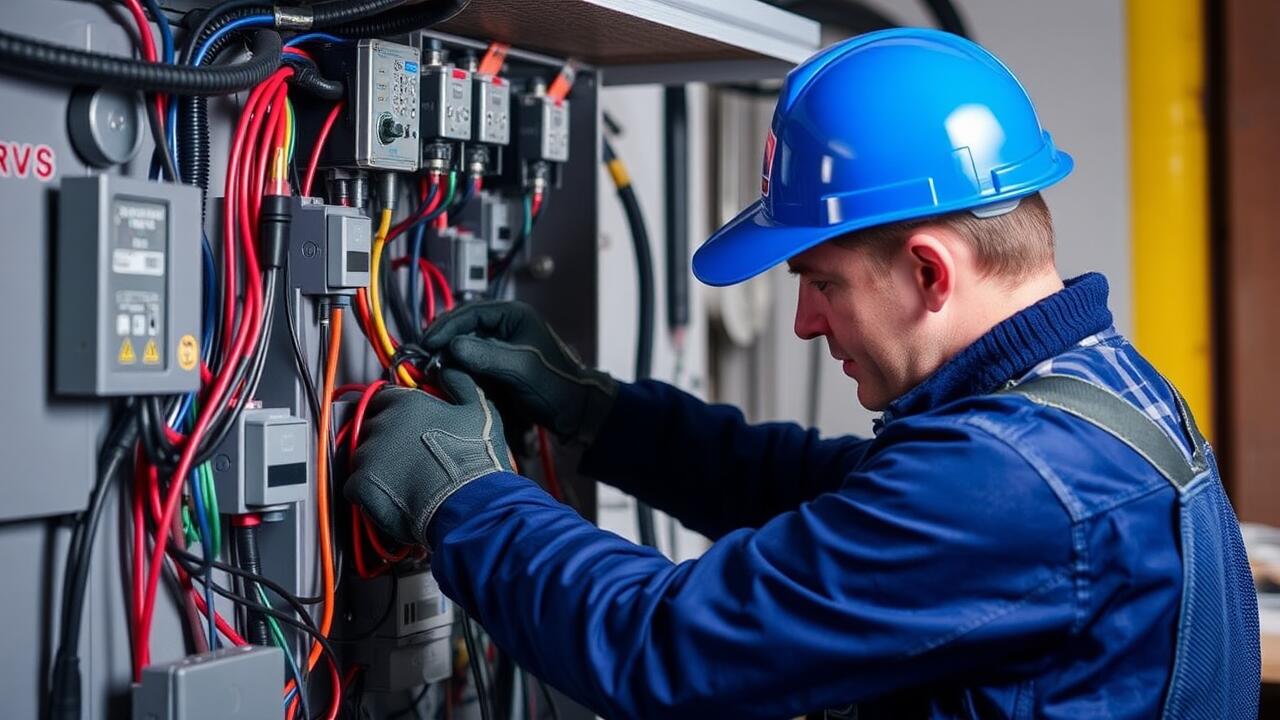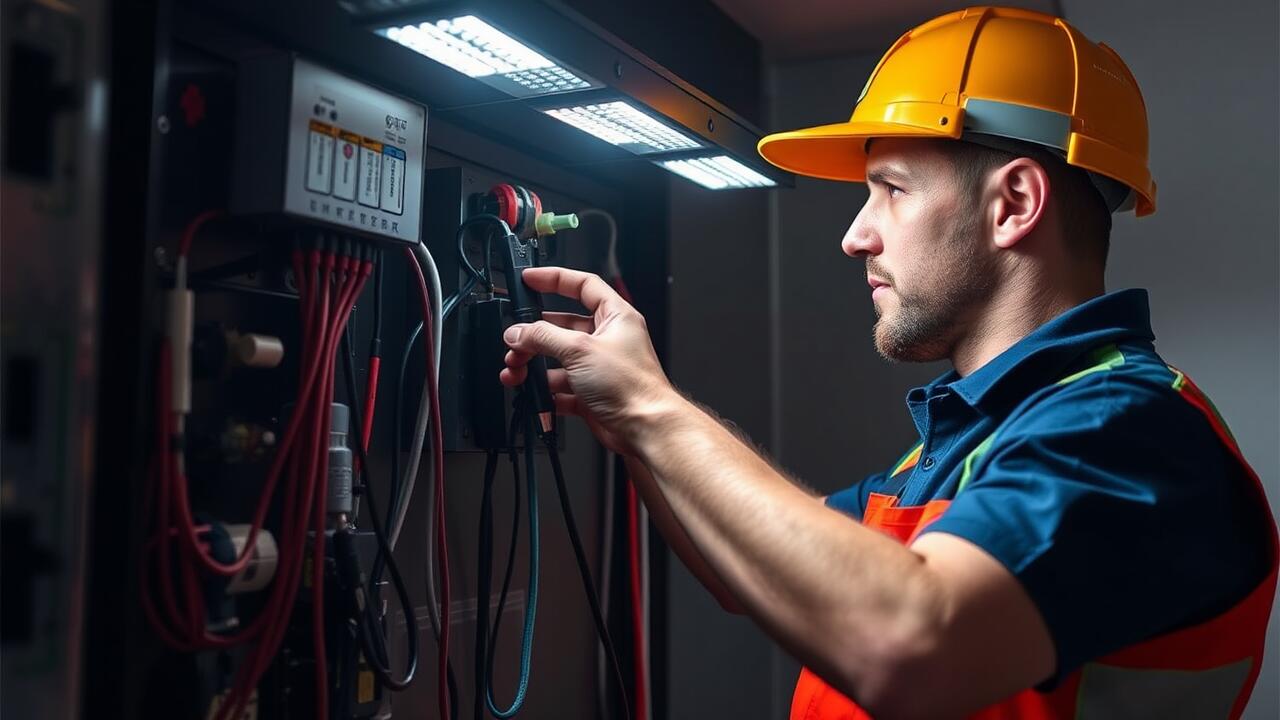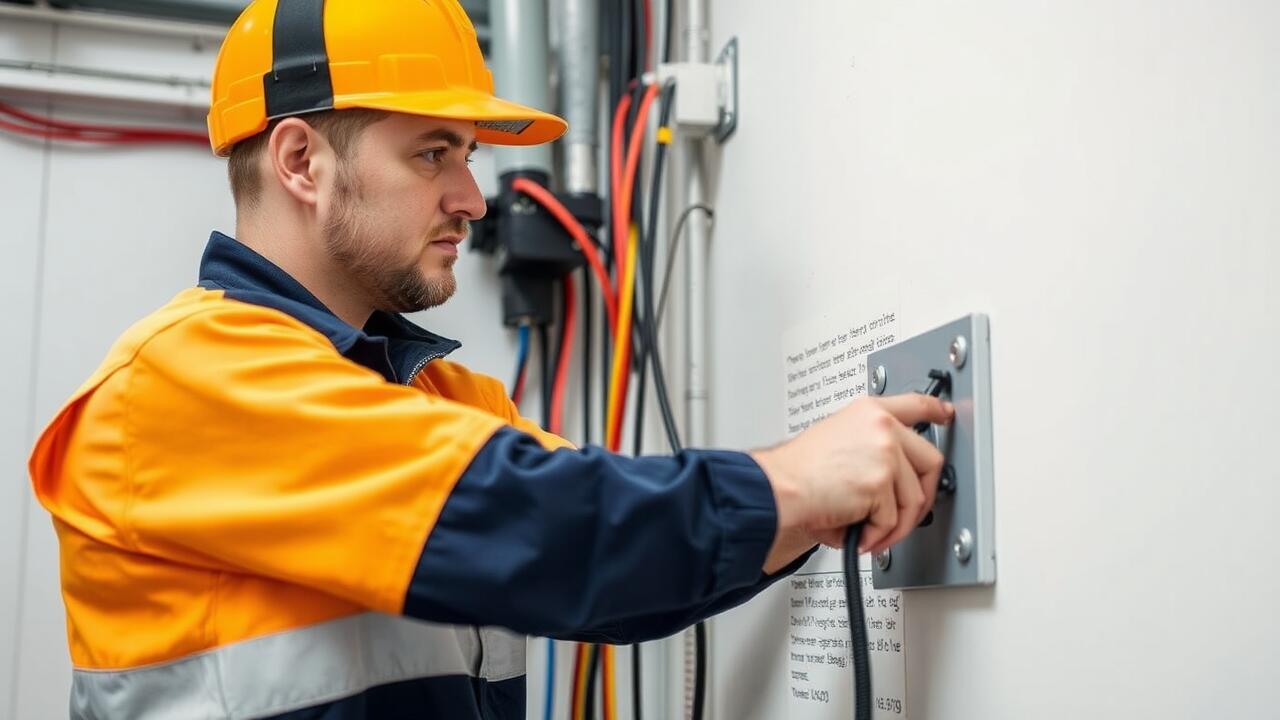
Steps to Identify Overloaded Circuits
To identify overloaded circuits, start by observing the performance of your electrical devices. Frequent tripping of circuit breakers or blown fuses indicates an overload situation. Take note of the appliances causing these disruptions, especially when multiple devices operate simultaneously. Understanding the capacity of your circuit can help pinpoint issues, especially if high-wattage items are used together.
Next, it is crucial to check for signs of overheating or burning smells near outlets and switches. These indicators may point to potential electrical hazards. If the problem persists after taking initial troubleshooting steps, it may be wise to consider specialized services for Electrical Repairs in Greenspoint, Houston. Addressing overloaded circuits promptly can prevent more serious electrical failures and ensure safety in your home.
A Methodical Approach to Troubleshooting
To effectively troubleshoot an overloaded circuit, begin by identifying the circuit breaker that has tripped. This is usually located in the main electrical panel of your home. Once you find the breaker, examine which devices or outlets are connected to that circuit. It helps to make a list of the appliances plugged in and their respective wattage to gain a clearer picture of the load. Understanding the circuit's capacity and the total load in use is essential.
Next, check the wiring for any signs of overheating or damage, as this can indicate an issue beyond just an overloaded breaker. Monitoring the usage of high-energy devices, such as space heaters or air conditioning units, can also provide insight into potential overloads. If these steps do not resolve the issue, it may be time to contact professionals for assistance. Electrical Repairs in Clear Lake City, Houston, can ensure that your home is safe and up to code, addressing any underlying problems effectively.
Importance of Load Calculations
Load calculations are critical in managing electrical systems effectively. They help determine the total wattage of all devices that will be used on a circuit, ensuring that the system can handle the demand without exceeding its capacity. Accurate load calculations can prevent overheating, tripped breakers, and potential fire hazards. Homeowners should routinely evaluate the load to ensure that they are not overloading their circuits, which can lead to costly failures and unsafe conditions.
For those living in areas such as Third Ward, Houston, understanding the importance of load calculations becomes even more significant. Many homes may have outdated wiring systems that were not designed for today's electrical demands. When planning renovations or upgrading electrical systems, residents should consider hiring professionals to perform load calculations. This proactive approach not only enhances safety but also provides peace of mind, especially in densely populated areas where electrical demands are high. Electrical Repairs in Third Ward, Houston, can help homeowners accurately assess and manage their circuit loads effectively.
How to Calculate Electrical Loads
Calculating electrical loads involves determining the total amount of electrical demand on a circuit to ensure it can handle the power requirements without overload. Start by listing all the appliances and devices that will be connected to the circuit. Each device has a specific wattage rating, usually found on its label or in the user manual. Once you gather this information, add up the wattages to find the total load. It’s important to include all lights, outlets, and any additional equipment that may be used simultaneously to get an accurate measurement.
Understanding the total load helps in preventing potential hazards like circuit overloads. Consider applying a safety margin, typically around 80% of the circuit's capacity, to ensure reliability and prevent tripping breakers. This practice is especially relevant for those residing in areas with older wiring systems. If calculations reveal an excessive load, or if you're uncertain about the process, it may be time to consult professionals for assistance. Residents looking for reliable assistance with such issues can seek out services for electrical repairs in Alief, Houston, ensuring both safety and compliance with local regulations.
When to Seek Professional Help
Recognizing when to seek professional help for overloaded circuits is crucial for safety and efficiency. If you experience frequent tripped breakers, flickering lights, or persistent burning smells from outlets, these signs indicate a deeper issue that may require expert intervention. Attempting to solve these problems without proper knowledge can lead to further complications or even electrical hazards in your home.
Hiring a qualified electrician can provide peace of mind and ensure all repairs are up to code. Professionals can accurately assess your electrical system, diagnose issues, and suggest necessary upgrades for optimal performance. If you live in the area, consider contacting services specializing in Electrical Repairs in Midtown, Houston, to help address these concerns safely and effectively.
Signs That Indicate a Need for an Electrician
Recognizing when to call in a professional is essential for maintaining safety and efficiency in your electrical system. Some signs to watch for include frequent circuit breaker trips, flickering lights, and a noticeable burning smell. These indicators can suggest that your system is working harder than it should. Ignoring these symptoms could lead to more significant issues down the line, including fire hazards.
If you notice unusual noises from outlets or switches, it’s another clear sign that professional assistance may be necessary. You should also be alert to any discoloration around outlets, which can be a sign of overheating. For residents needing guidance with their electrical concerns, seeking Electrical Repairs in Clear Lake City, Houston, can help ensure your home’s electrical system operates safely and efficiently.
FAQS
What are the common signs of an overloaded circuit?
Common signs of an overloaded circuit include frequent tripped circuit breakers, flickering or dimming lights, warm or hot outlets, and a burning smell near electrical components.
How can I calculate the load on my circuits?
To calculate the load on your circuits, you can add the wattage of all devices connected to the circuit. Use the formula: Total Watts = Voltage x Amperage, and ensure the total does not exceed the circuit’s rating (typically 15 or 20 amps).
Is it safe to reset a tripped circuit breaker frequently?
While resetting a tripped circuit breaker occasionally is normal, doing it frequently could indicate an overloaded circuit or a fault. It’s best to investigate the underlying issue rather than relying on resets.
When should I consider hiring a professional electrician?
You should consider hiring a professional electrician if you notice persistent problems with your circuit, experience repeated tripping of breakers, or if you are uncomfortable performing electrical work yourself.
Can overloaded circuits cause fire hazards?
Yes, overloaded circuits can pose a significant fire hazard. Excessive heat generated by an overloaded circuit can ignite surrounding materials, making it crucial to address overload issues promptly.




